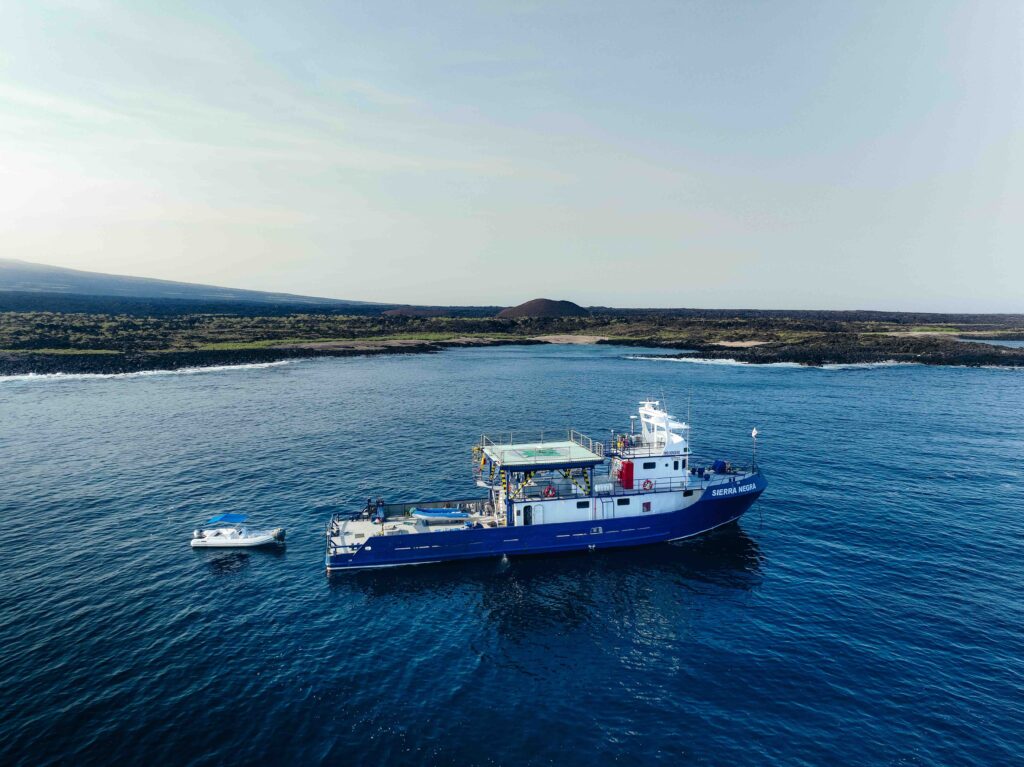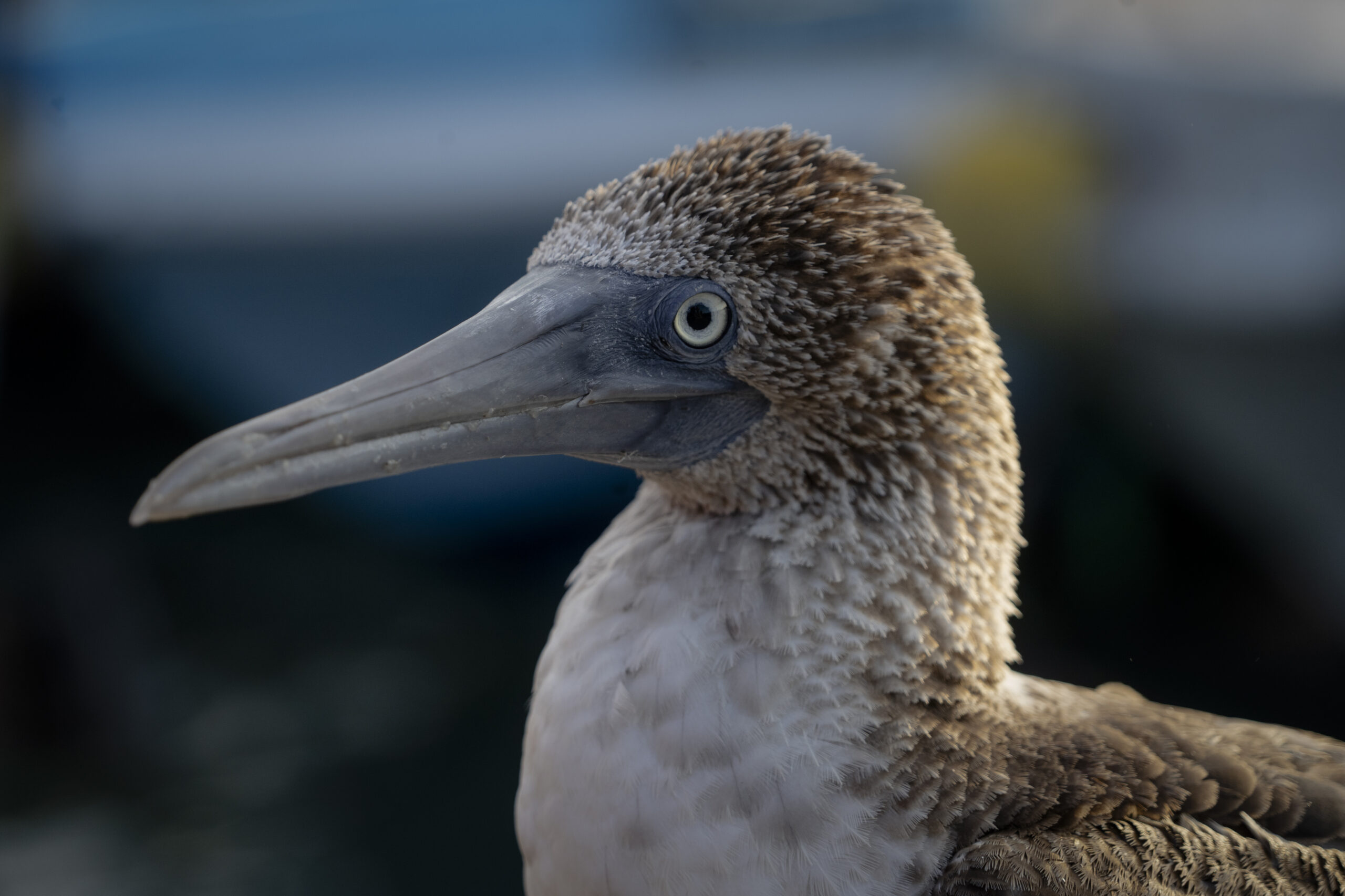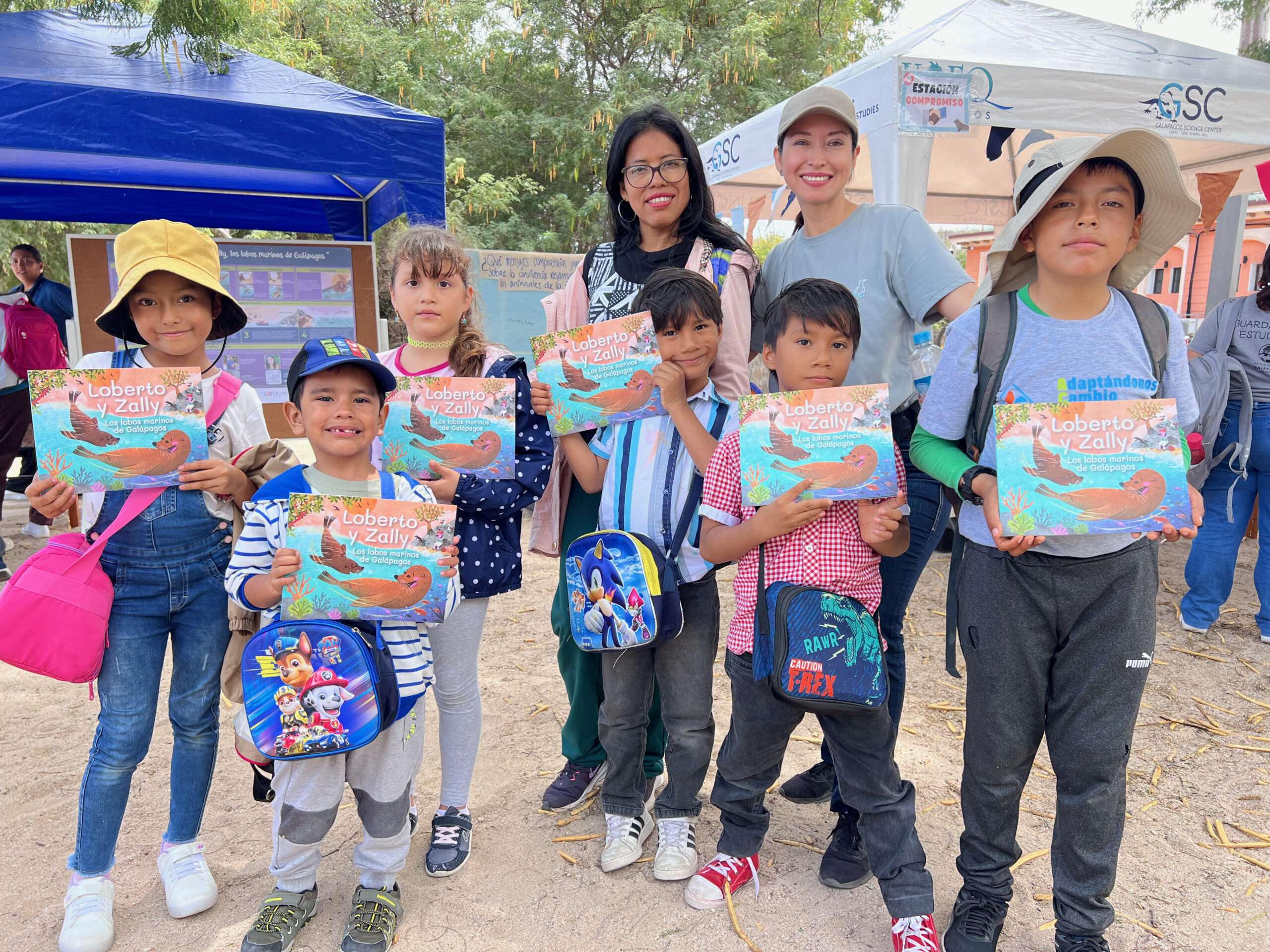Vessel Sierra Negra. Photograph by David Liberio of the Galápagos Conservancy.
During March and April 2024, monitoring and scientific research activities were conducted aboard the oceanic vessel Sierra Negra, where an exploration of the ecological conditions of various species inhabiting the Galápagos Marine Reserve took place. Throughout this expedition, 30 reproductive sites of iguanas, turtles, and sea lions settled on 14 islands of the archipelago were visited, obtaining valuable information on how these species respond to events related to climate change such as the El Niño Southern Oscillation (ENSO).
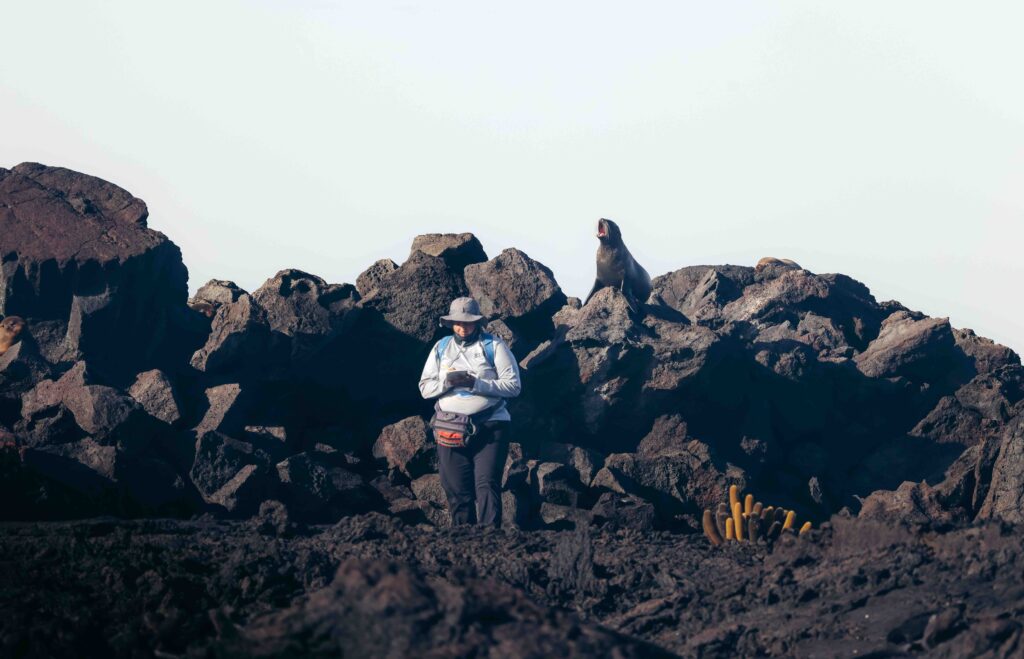
The Galápagos National Park Directorate (GNPD), Universidad of San Francisco de Quito (USFQ), and the Galapagos Science Center (GSC) maintain collaborative agreements for the conservation of Galápagos. This has enabled research cruises to be carried out annually since 2014, except for the year 2020 when there was a halt due to the limitations imposed by the COVID-19 pandemic. “It is important to emphasize that this effort stemmed from the need to update population data for emblematic species such as sea lions, turtles, and marine iguanas – information that was scarce before 2014.” commented Diego Páez-Rosas, professor at USFQ and researcher at GSC.
These monitoring activities involve park rangers from the DPNG, scientists from USFQ and GSC, and special guests such as personnel from the Galápagos Biosecurity and Quarantine Regulation Agency (ABG), the Charles Darwin Foundation (CDF), and the Ecuadorian Navy, as well as the financial support of allied institutions such as Galápagos Conservancy (GC). These partnerships have allowed these research cruises to be successful in conducting work that accurately comprehends the effects of climate change on the population dynamics of these species.
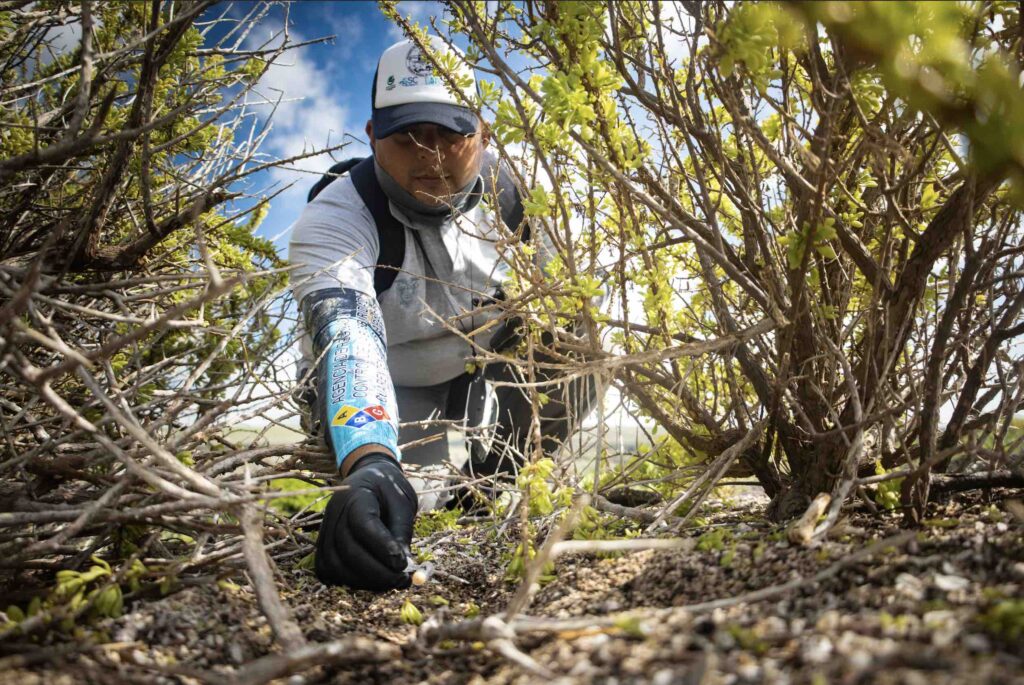
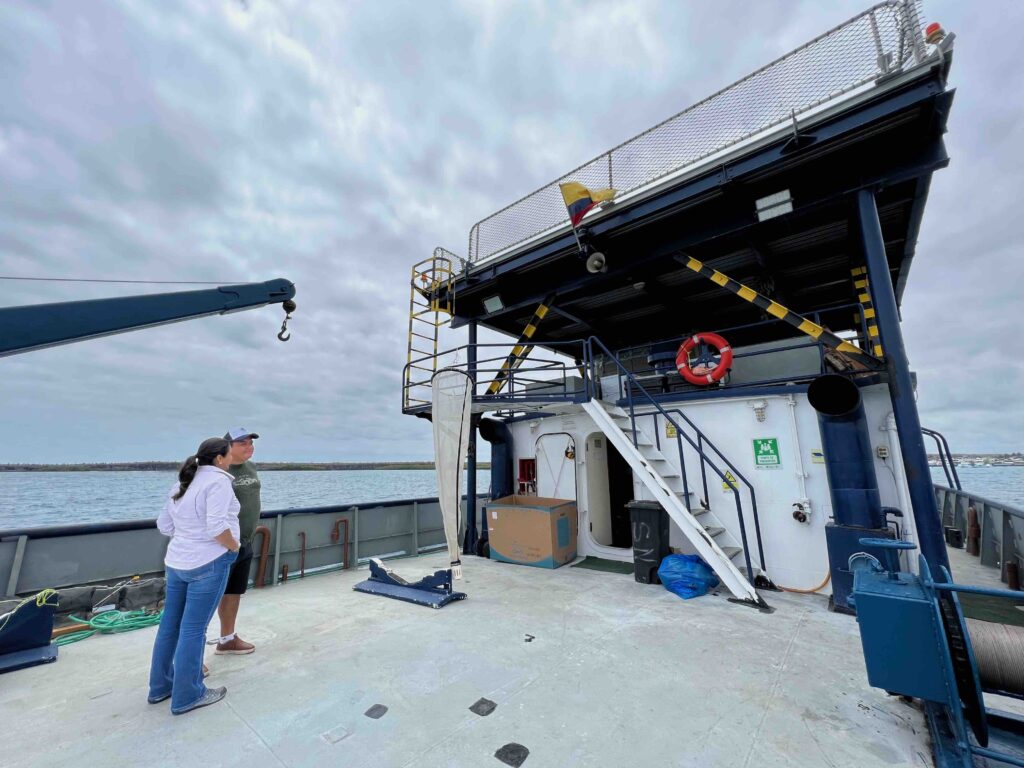
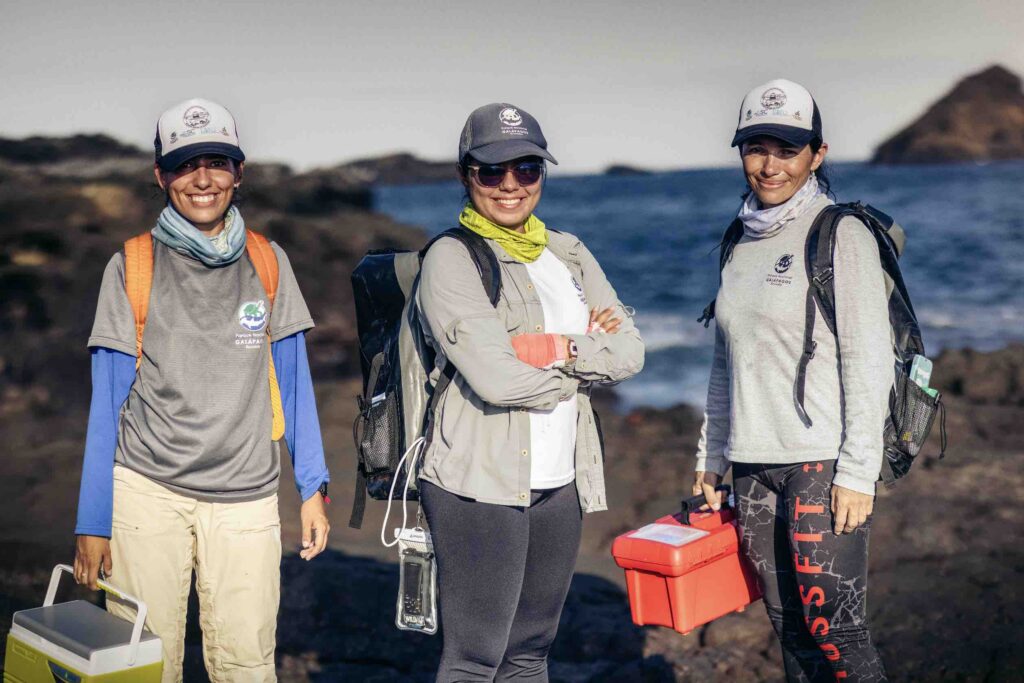
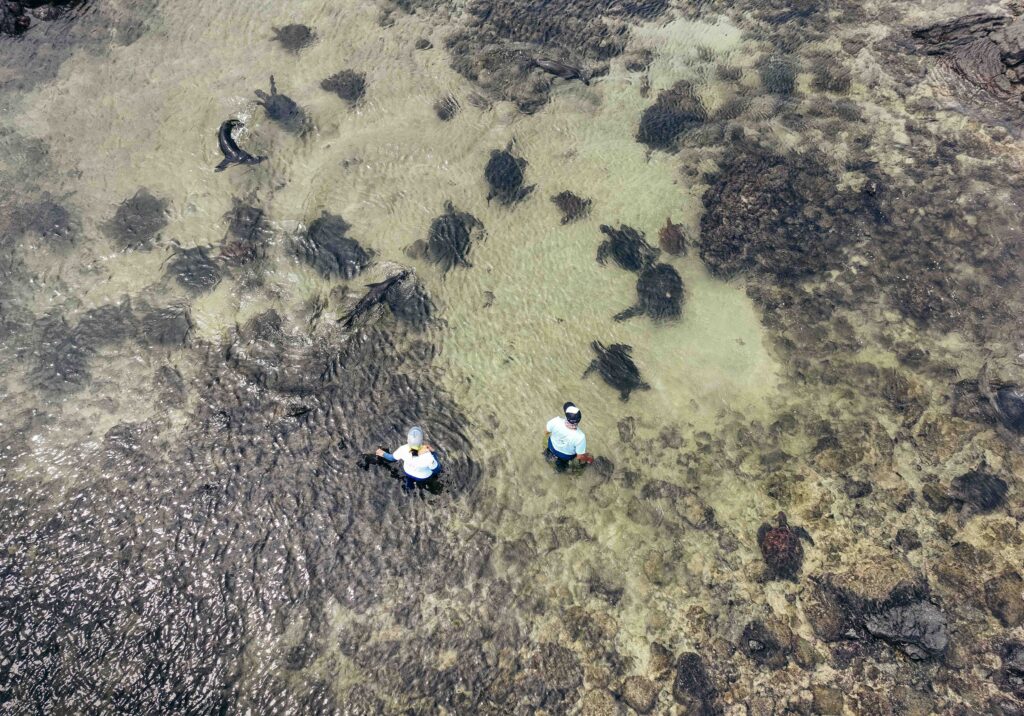
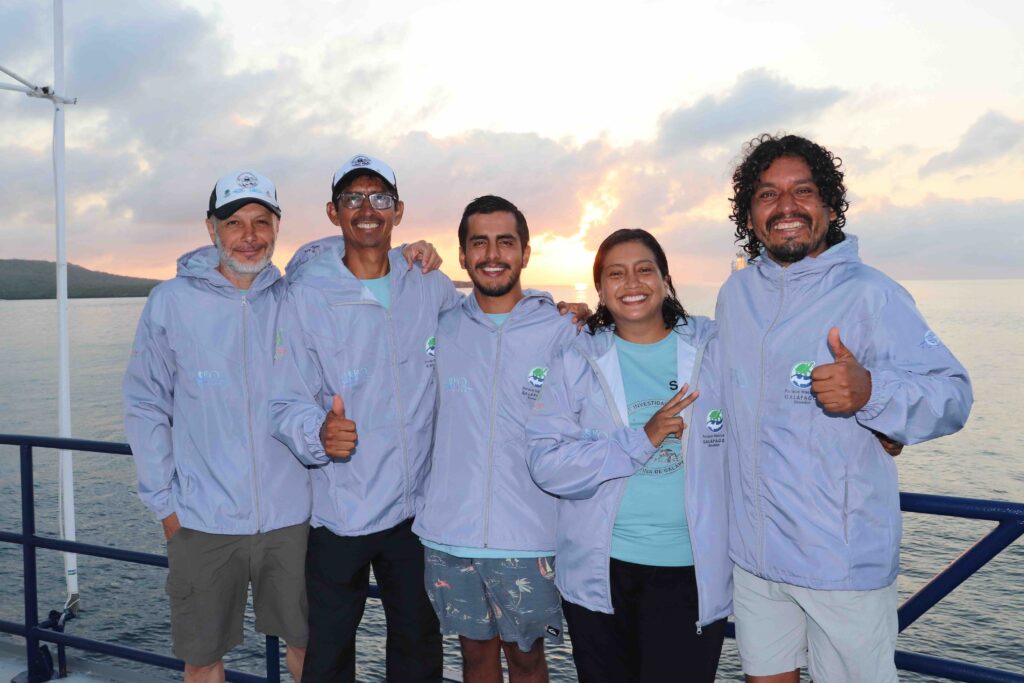
The emblematic species monitoring expedition of 2024 lasted for 15 days which allowed the team to visit 30 reproductive sites of iguanas and sea lions across 14 islands: Fernandina, Isabela, Pinta, Marchena, Genovesa, Santiago, Rábida, Pinzon, Seymur, Santa Cruz, Santa Fe, Floreana, Española, and San Cristóbal. “My role on this trip was to ensure that we use the best methodologies for handling and sampling emblematic fauna, minimizing contact with the species, to generate the least possible impact,” commented Jorge Torres, park ranger of the GNPD.
Preliminary results obtained during the 2024 scientific research cruise reveal significant findings.
The use of remote sensors (drones) allowed census several species in 30 different sites on 14 islands, counting a total of 23,037 marine iguanas (Amblyrhynchus cristatus), 3,601 sea lions (Zalophus wollebaeki) and 2,162 fur seals (Arctocephalus galapagoensis). In addition to this, biological samples were taken from various tissues of the species mentioned.
27 sites on 13 islands were also monitored to detect the presence of introduced ants, identifying 12 species present in most of the sites, with the exception of Punta Espinoza on Fernandina Island, where no ants were found.
Based on the general counts, the final population estimates for all the monitored species will be published during the course of this year.
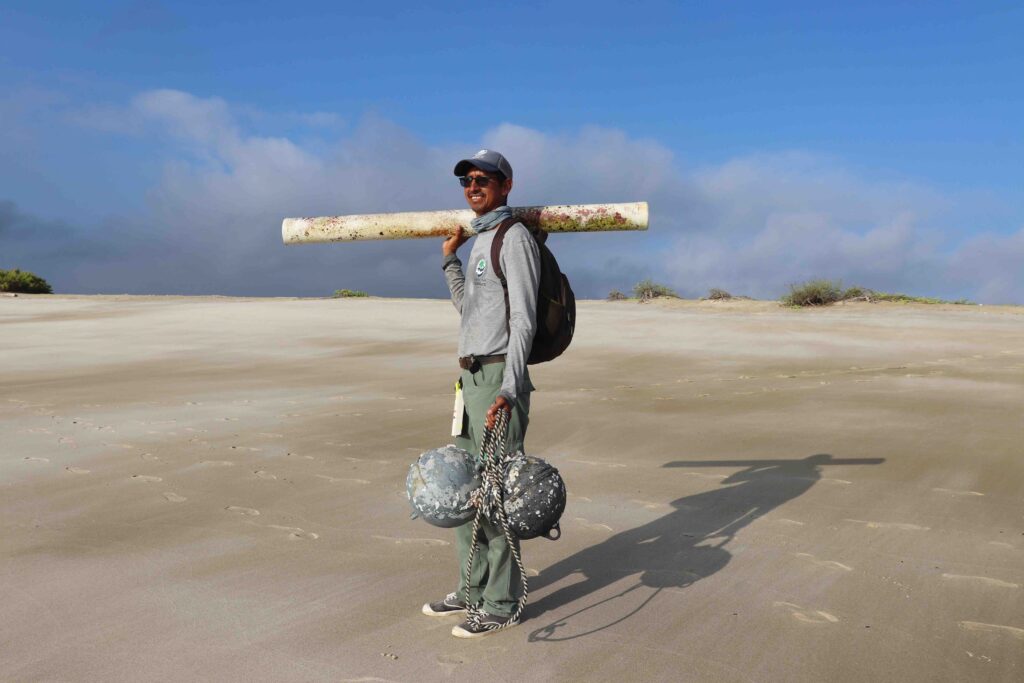
In conclusion, the execution of scientific research cruises not only provides a fascinating glimpse into the wildlife of Galápagos but also generates baseline information that will be used in management decision-making by the GNPD, facilitating conservation efforts for the emblematic biodiversity of the Galápagos archipelago.
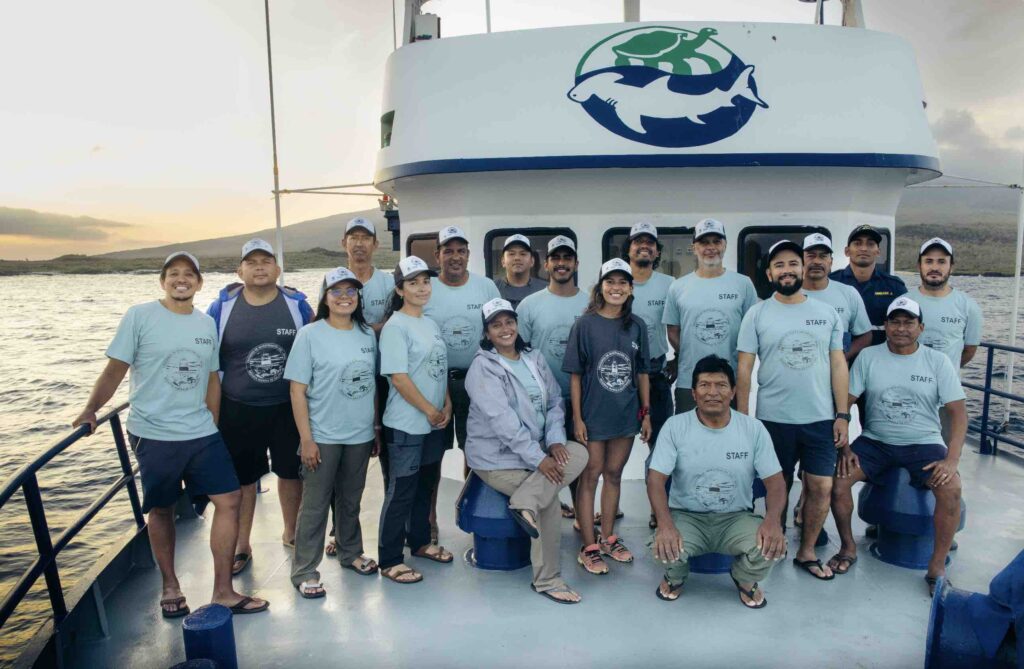
General Details: The scientific research cruise of 2024 was led and executed by the Galápagos National Park Directorate, the Universidad San Francisco de Quito, and the Galapagos Science Center, with the support of the Galápagos Conservancy.
Project Leaders for Sea Lion and Fur Seal Monitoring: Dr. Diego Páez-Rosas and Dr. Marjorie Riofrío-Lazo, professors at USFQ and researchers at GSC.
Project Leaders for Sea Turtle and Marine Iguana Monitoring: Biol. Jennifer Suárez and Dr. Andrea Loyola, park rangers at GNPD.
Project Leader for Monitoring Introduced Ants: Mauricio Mieles, technician of the Agency for the Regulation and Control of Biosecurity and Quarantine for Galapagos.

